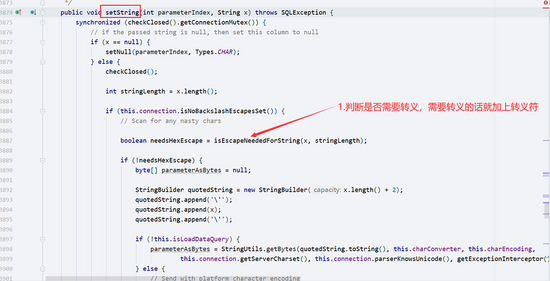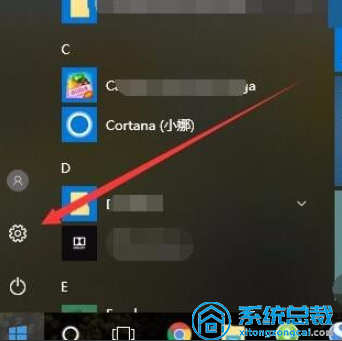前沿
在现有的框架中sql防注入已经做得很好了,我们需要做的就是尽量不要使用sql拼接调用
java sql注入原因以及预防方案(易理解)
1. SQL注入
1.1 原理
SQL注入是通过客户端的输入把SQL命令注入到一个应用的数据库中,从而执行恶意的SQL语句。
1.2 演示
1.2.1 案例1
有一个登录框,需要 输入用户名和密码 ,然后我们的密码输入 'or '123' = '123 这样的。我们在查询用户名和密码是否正确的时候,本来执行的sql语句是:select * from user where username = '' and password = ''. 这样的sql语句,现在我们输入密码是如上这样的,然后我们会通过参数进行拼接,拼接后的sql语句就是:
select * from user where username = '' and password = ' ' or '123' = '123 ';这样的了,那么会有一个or语句,只要这两个有一个是正确的话,就条件成立,因此 123 = 123 是成立的。因此验证就会被跳过。这只是一个简单的例子,
1.2.2 案例2
密码比如是这样的:'; drop table user;, 这样的话,那么sql命令就变成了:
select * from user where username = '' and password = ''; drop table user;', 那么这个时候我们会把user表直接删除了。
1.3 防范
1.3.1 前端
- 前端表单进行参数格式控制;
1.3.2 后端
- 我们可以使用预编译语句(PreparedStatement,这 样的话即使我们使用sql语句伪造成参数,到了服务端的时候,这个伪造sql语句的参数也只是简单的字符,并不能起到攻击的作用。
- 使用正则表达式过滤传入的参数
注意: 永远也不要把未经检查的用户输入的值直接传给数据库
- java中的验证字符串是否包含sql的判断
package cn.javanode.thread;
import java.util.regex.Pattern;
/**
* @author xgt(小光头)
* @version 1.0
* @date 2021-1-8 11:48
*/
public class CheckSqlDemo {
/**正则表达式**/
private static String reg = "(?:')|(?:--)|(/\\*(?:.|[\\n\\r])*?\\*/)|"
+ "(\\b(select|update|union|and|or|delete|insert|trancate|char|into|substr|ascii|declare|exec|count|master|into|drop|execute)\\b)";
private static Pattern sqlPattern = Pattern.compile(reg, Pattern.CASE_INSENSITIVE);
private static boolean isValid(String str) {
if (sqlPattern.matcher(str).find())
{
System.out.println("未能通过过滤器:str=" + str);
return false;
}
return true;
}
public static void main(String[] args) {
System.out.println(isValid("tongji_user_add"));
}
}
补充
PreparedStatement是如何防止SQL注入的?
1. 拼接参数(sql注入)
Connection connection = DriverManager.getConnection(DB_URL, USER, PASS);
PreparedStatement preparedStatement = connection.prepareStatement(sql);
String param = "'test' or 1=1";
String sql = "select file from file where name = " + param; // 拼接SQL参数
ResultSet resultSet = preparedStatement.executeQuery();
System.out.println(resultSet.next());
输出结果为 true ,DB中执行的SQL为
-- 永真条件1=1成为了查询条件的一部分,可以返回所有数据,造成了SQL注入问题 select file from file where name = 'test' or 1=1
2. setString (防注入)
Connection connection = DriverManager.getConnection(DB_URL, USER, PASS);
PreparedStatement preparedStatement = connection.prepareStatement(sql);
preparedStatement.setString(1,account);//设置参数
preparedStatement.setString(2,password);
ResultSet resultSet = preparedStatement.executeQuery();//执行查询sql,获取结果集
输出结果为 false ,DB中执行的SQL为
select file from file where name = '\'test\' or 1=1'
我们可以看到输出的 SQL是把整个参数用引号包起来,并把参数中的引号作为转义字符,从而避免了参数也作为条件的一部分
3. 源码分析
结论
- preparedStatement.setString 会判断当前参数的符号是否需要转义,是的话加的转义符
- 如果不需要,则直接加上引号

//完整代码
public void setString(int parameterIndex, String x) throws SQLException {
synchronized (checkClosed().getConnectionMutex()) {
// if the passed string is null, then set this column to null
if (x == null) {
setNull(parameterIndex, Types.CHAR);
} else {
checkClosed();
int stringLength = x.length();
if (this.connection.isNoBackslashEscapesSet()) {
// Scan for any nasty chars
// 判断是否需要转义
boolean needsHexEscape = isEscapeNeededForString(x, stringLength);
if (!needsHexEscape) {
byte[] parameterAsBytes = null;
StringBuilder quotedString = new StringBuilder(x.length() + 2);
quotedString.append('\'');
quotedString.append(x);
quotedString.append('\'');
if (!this.isLoadDataQuery) {
parameterAsBytes = StringUtils.getBytes(quotedString.toString(), this.charConverter, this.charEncoding,
this.connection.getServerCharset(), this.connection.parserKnowsUnicode(), getExceptionInterceptor());
} else {
// Send with platform character encoding
parameterAsBytes = StringUtils.getBytes(quotedString.toString());
}
setInternal(parameterIndex, parameterAsBytes);
} else {
byte[] parameterAsBytes = null;
if (!this.isLoadDataQuery) {
parameterAsBytes = StringUtils.getBytes(x, this.charConverter, this.charEncoding, this.connection.getServerCharset(),
this.connection.parserKnowsUnicode(), getExceptionInterceptor());
} else {
// Send with platform character encoding
parameterAsBytes = StringUtils.getBytes(x);
}
setBytes(parameterIndex, parameterAsBytes);
}
return;
}






